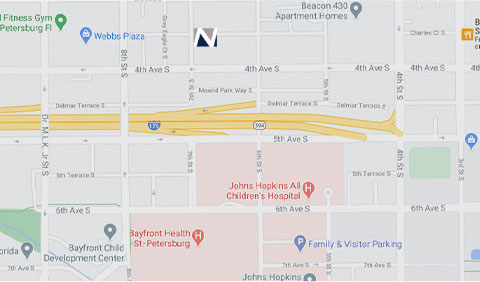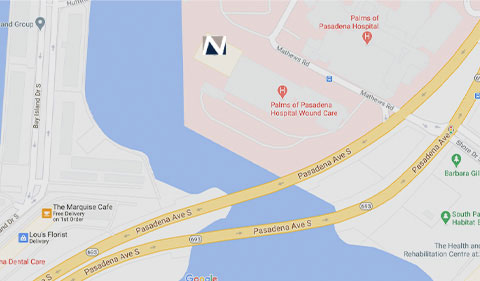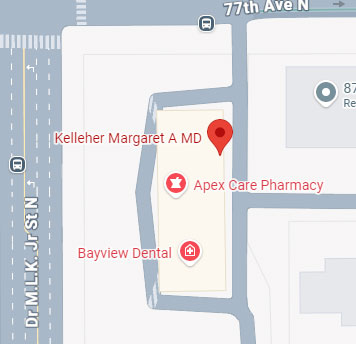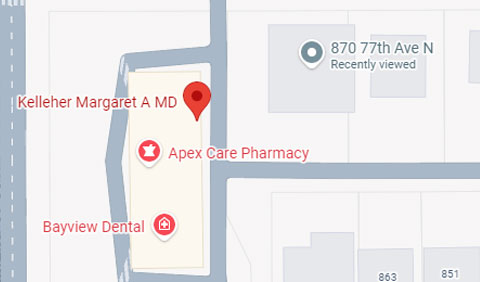Photodynamic Therapy
Activate Powerful Compounds with Light in St. Petersburg, South Pasadena, and Tampa Bay
Many cosmetic rejuvenation treatments specifically target unwanted cells, damaging them so the body naturally sloughs them off or reabsorbs them. While most light-based treatments do this by heating the tissue, photodynamic therapy is different. With photodynamic therapy at Tampa Bay's Nelson Dermatology, our physicians use light to activate compounds applied to the skin, killing off potentially dangerous cells, as well as bacteria that can cause acne outbreaks.
Our dermatologists use Blu-U as the light source. The blue wavelength has several benefits, both cosmetic and medical.
Schedule your consultation for photodynamic therapy in Tampa, with offices in St. Petersburg or South Pasadena, near St. Pete Beach. Call Nelson Dermatology at (727) 895-8131.
What Is Photodynamic Therapy and What Does It Treat?
Photodynamic therapy is a medical treatment that involves placing a special medication, known as a photosensitizer, on the skin, and then using a light source to activate this medication. The combination of photosensitizing medication, an activating light source, and oxygen results in a chemical reaction that targets specific damaged skin cells. At Nelson Dermatology, our board-certified dermatologists utilize a Levulan® Kerastick® to apply the photosensitizing agent to your skin.
Once applied, this Levulan® is absorbed into the skin and sun-damaged cells where it is then converted into an active metabolite known as protoporphyrin IX. Depending on the area and condition being treated with photodynamic therapy, this process may take an hour or longer to occur.A specific wavelength of light is then utilized to activate this metabolite. At Nelson Dermatology, we use the Blu-U to deliver the proper wavelength of light for the proper time period to effectively treat your sun-damaged skin. Due to the popularity of the Blu-U light source, some patients call their photodynamic therapy the "Blue Light" treatment.
The most common use for photodynamic therapy is for the treatment of precancerous skin lesions, known as actinic keratoses, caused by chronic exposure to ultraviolet radiation from the sun and tanning lamps. These small, rough red spots in sun-damaged skin can slowly evolve into squamous cell carcinoma if not treated. While there are many therapeutic options for a single actinic keratosis, treatment can be more difficult when patients have large areas of sun-damaged skin and numerous actinic keratoses.
Photodynamic therapy is a great option for treating these heavily sun-damaged areas and offers the advantage of addressing multiple lesions all at once. In fact, photodynamic therapy can treat not only the lesions we can see and feel now, but potentially treat any early lesions that have not yet appeared on the skin. We believe that the use of this treatment option can help to significantly improve your actinic keratoses, and hopefully decrease your risk of skin cancer in the future.
While photodynamic therapy is most often utilized to treat actinic keratoses, the team at Nelson Dermatology also uses photodynamic therapy to clear acne and minimize future flare-ups. The blue light of a photodynamic therapy session kills P. acnes bacteria that multiply in clogged pores, causing pimples to form. Regular exposure to the specific light wavelength can keep bacteria levels lower on the face, minimizing the risk of breakouts and rejuvenating the skin.
Who Performs Photodynamic Therapy at Florida's Nelson Dermatology?
As with all treatments at our Tampa Bay practice, board-certified dermatologists perform photodynamic therapy. A proper diagnosis of any skin condition and determination of the ideal treatment is a critically important part of any rejuvenation plan, which is why working with a properly educated, trained, and experienced physician is key.
What Can I Expect from a Photodynamic Therapy Session?
If photodynamic therapy is being performed to treat actinic keratoses, the board-certified dermatologists at Nelson Dermatology will evaluate the targeted area prior to the treatment. The skin is cleansed and degreased with alcohol. If there are any particularly thick lesions, the doctor will gently scrape or "debride" these areas. The doctor will then apply the Levulan® Kerastick® to the area.
Once the medication has been fully absorbed into your skin, which takes an hour or longer, we will then turn on the light source. Typically, for treating actinic keratoses, the Blu-U is activated for 16 minutes and 40 seconds (1,000 seconds). The patient may not initially feel much, but as time progresses, the area becomes very warm and slightly uncomfortable. In order to help make the treatment more pleasant, we use a special medical chilling device to blow cold air over the area. This typically makes our patients much more comfortable during their procedure.
Following the treatment, the area will appear red and may be warm and tender to the touch. This warmth and discomfort can last for a day or two. Following the photodynamic therapy treatment, we recommend that patients avoid sun exposure, as sunlight may reactivate the photosensitizing medication, causing an overtreatment of the area. Many patients find the application of cold compresses, or ointments such as Vaseline or Aquaphor that have been refrigerated, to feel cool on the skin and help with the initial discomfort. Patients may develop some crusting or scaling in treatment areas over the first several days after the treatment. Typically, the greater the sun damage in a treatment area, the more significant the treatment effect and discomfort will be. Fortunately, this also often leads to the best treatment improvements. Within a week or so after photodynamic therapy, the skin has typically improved and healed.
Patients with acne often do not need Levulan® applied to their skin for the Blu-U to help their condition. The blue light alone can kill the p. acnes bacteria that causes acne. Acne patients only need to have the Blu-U light applied to their skin for 16 minutes and 40 seconds (1,000 seconds). Since no photosensitizing agent is used, the treatment is much milder than traditional PDT and does not result in significant heat or discomfort. Multiple treatments are typically required to improve acne—typically one to two treatments per week for six weeks. In severe cases of acne, photodynamic therapy with a photosensitizing agent and light activation can be performed. This is a much more intense treatment with more downtime and healing comparable to PDT for actinic keratoses.
What Other Light Treatments Are Available?
Similar to photodynamic therapy, lasers employ specific wavelengths of light to treat your skin, but the light energy is more intense and focused. At Nelson Dermatology, we use lasers to treat vascular conditions, such as spider veins. We also use the broad wavelengths of intense pulsed light to address redness, spots, and other pigmentation problems due to sun damage.
Schedule your consultation to discuss photodynamic therapy cost and other details in St. Petersburg or South Pasadena. Call Nelson Dermatology at (727) 895-8131.








